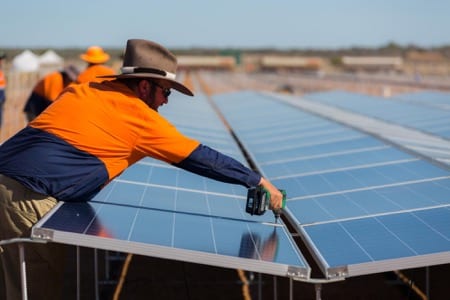Controversial new rules that threaten to bring the Queensland commercial and utility-scale solar industries to a screeching halt have quietly become law this week, despite not-so quiet pleas to the state government to rethink the move.
And apart from threatening to derail businesses, blow out project timelines, bump up project costs by as much as 20 per cent, and cause widespread job losses, they’re really very, very silly.
The Electrical safety (solar farms) amendment regulation 2019 requires – as of Monday – the mounting, locating, fixing and removal of solar panels on projects of 100kW and over to only be undertaken by licensed electricians.
In rushing the rules through, the Queensland government has argued they are necessary to ensure the safety of workers and other people during the construction and operation of solar farms.
As we have reported, the solar industry has firmly and almost universally disagreed, arguing the change is neither necessary, nor practicable – where will all these licensed electricians be found? – and will drive up costs and blow out schedules for existing projects, while making others altogether unviable.
So far, the government has declined to meet with the solar industry to discuss these concerns, but has instead made various minor adjustments to the increasingly baffling guidelines on its WorkSafe website.
“There are many tasks that can be performed by an assistant (such as a trades assistant or general labourer) who is not a licensed electrical worker,” the document says, in a bid to reassure businesses and local governments worried about the impact on jobs in regional Queensland.
But what follows reads something like a Monty Python script, and would be funny if there wasn’t so much at stake.
The first point of confusion: who can mount, locate, fix and remove solar panels on big solar jobs in Queensland?
Originally, this was pretty clear in the new rules: fully licensed electricians only. Now, the guidelines note that electrical apprentices can also do these things, and so can the holder of an electrical work training permit… but only under the strict supervision of a licensed electrician.
So, not much change there.
The second major point of confusion is over what other workers, like Trades Assistants (TAs) or general labourers, can do, if they can no longer mount and fix panels – which would usually make up the bulk of their work on a commercial scale or solar farm project.
According to the guidelines, they may unpack PV panels, they may carry them around the site, carry them to the “point of location,” and even pass them directly to the licensed electrical worker.
Further, they can “support” a panel for the electrician – or help to old it in place where it is being fixed on the mounting structure – but only “at the same time as the licensed electrical worker is locating, mounting and fixing the solar panel on the PV array structure.” (Their emphasis)
What they can NOT do is do up the bolts. “The competent trades assistant or general labourer cannot perform the tasks of locating, mounting and fixing such as use of a rattle gun to mechanically bond the panel to the PV array structure.”
So, basically, once the panel is near the mounting structure, don’t touch it unless an electrician is also touching it, and don’t even think about using the rattle gun. Clear?
Not really, seems to be the response.
As one solar developer put it, these “clarifications” on the government website only serve “to further highlight just how poorly put together, ill-thought out, and rushed these changes are.”










